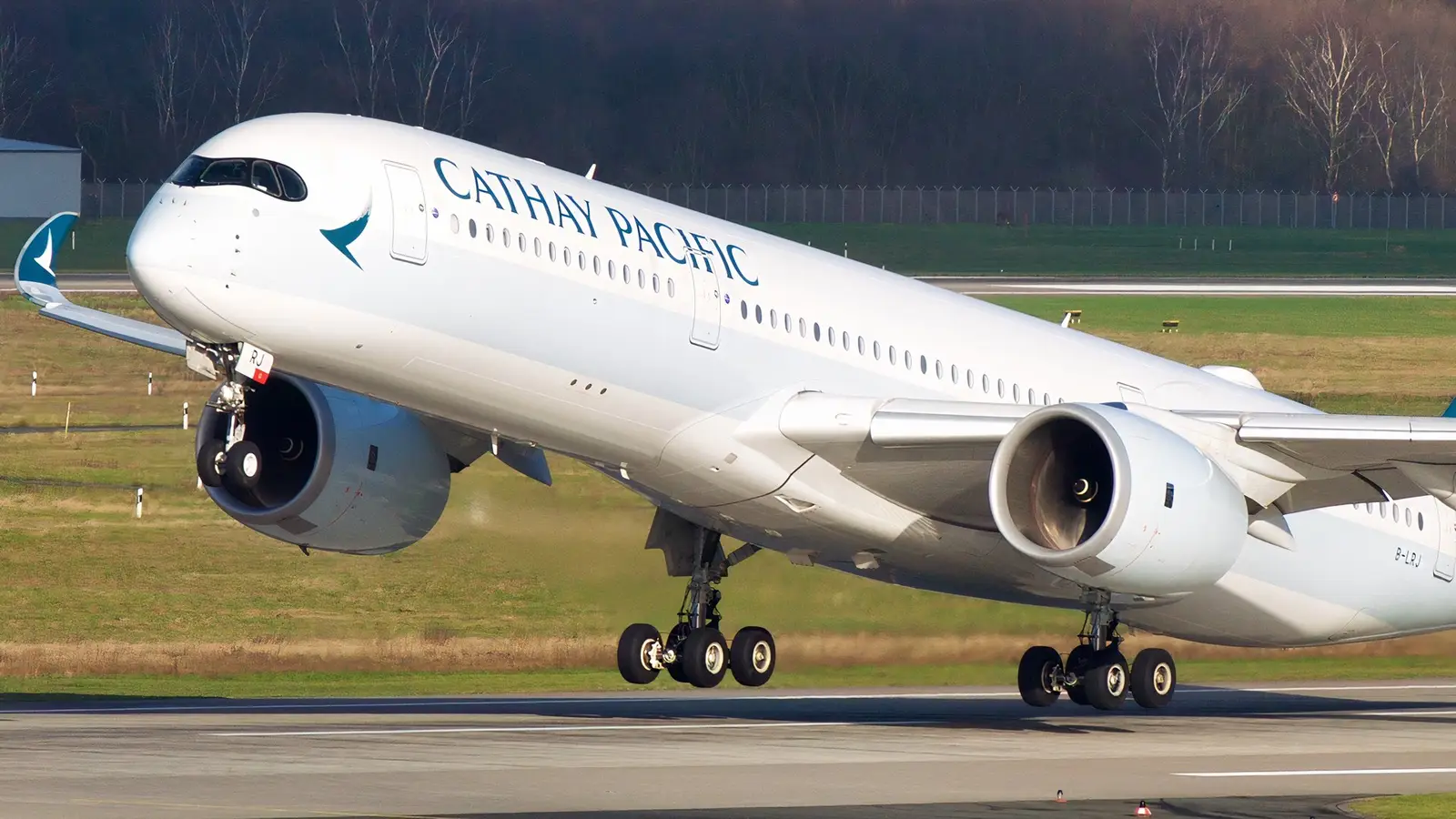
Ronald Lam is CEO of the Cathay Pacific Group. Speaking at Routes World in Hong Kong, he stated his remit: Cathay Pacific itself (the passenger airline), Cathay Cargo, its wholly owned low-cost unit HK Express, and Cathay Lifestyle. As if he’s not busy enough, he is also chairperson of HK Express.
Perhaps unsurprisingly, Lam was bullish: “We are stronger and better than we were before the coronavirus.” He did not “waste” the pandemic, using it as justification for significant reforms. And now, he says, he’s in a better position to face the future.
Connecting China To The World
Without ambiguity, and speaking of its passenger operation, Lam said that, “We connect China to the world and the world to China.” Booking data for the 12 months to August 2025 confirms that.
Breaking down the oneworld member’s connecting traffic through Hong Kong shows that China was present in seven of the top ten country markets: US-China, Australia-China, India-China (a market that gets little attention), Taiwan-China (which was historically significantly more important when nonstop flights were prohibited), Indonesia-China, Australia-Japan, Canada-China, India-Japan, Indonesia-Japan, and Singapore-China.
Cathay focuses on the premium end of markets, where business travel is significant, but also where freight traffic is considerable and connecting passengers are vital. In contrast, HK Express focuses on the point-to-point value end of markets, although both airlines codeshare. Like LCCs globally, HK Express often launches brand-new markets, with analysis of Cirium Diio data showing that 43% of its routes have no direct competition. To capture demand at both ends of the market, the two airlines coexist to several major Asian cities.
100+ Destinations When The Two Airlines Are Combined
According to the pair’s schedule submission to Cirium for October 2025 to July 2026, they currently plan to fly to 106 airports globally. A very strong mainland network underpins the Group’s global development. They collectively serve 23 airports in China, with a fifth of their total flights deployed there.
When writing, Cathay has added or announced nine new or returning routes for 2025 or 2026: Adelaide, Brussels, Dallas/Fort Worth (which is the airline’s longest route), Hyderabad, Phnom Penh, Munich, Rome, Seattle (which is its ninth passenger destination in North America), Tel Aviv, and Urumqi. HK Express has added 11 places: Changzhou, Cheongju, Daegu, Guiyang, Ishigaki, Komatsu, Kota Kinabalu, Kuala Lumpur Subang, Sendai, Shimojishima, and Yiwu.
Hong Kong’s third runway opened in November 2024, which has naturally resulted in more opportunities for the Group. However, Lam emphasized that Cathay already has a “very strong” network in North America, Europe, and Australia, although he added that some additional markets will be added. At the Group level in Asia, growth will primarily be coming from HK Express rather than Cathay. Still, he singled out one driving force for Cathay’s development:
“Our newest growth opportunity is to serve ‘Belt and Road’ countries, cities, or hubs in support of China’s development. The Middle East will be important in this [which partly explains the return to Riyadh in October 2024 and increasing flights to daily], along with flights to some hubs [such as Urumqi to reach Central Asia] and Dallas [to connect to Central America and South America]. Such routes will help with the initiative.”
Frequency Growth Will Be More Important Than Destinations
Lam anticipates higher frequencies will be particularly important for future growth, which will also help with the number of connections, tourism to Hong Kong (which is growing in significance), competitiveness, and market share. Specifically meaning Cathay, he said this will be especially important within Asia: “Our network in Asia is mature, so growing the number of flights [rather than destinations] will be a priority.”
Naturally, this comes with an impediment: “Slots are nowadays a bigger constraint worldwide than traffic rights, which is restricting our growth.” He singled out London Heathrow (to which it has five passenger flights a day) and New York JFK (three daily), along with key Chinese airports. Increasing aircraft gauge will be important, including on the incoming Boeing 777-9s, with 35 frames on order.



